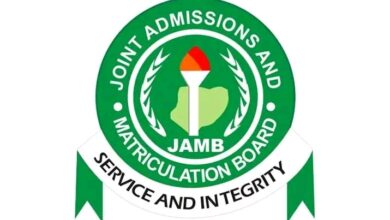Geography JAMB Syllabus

Are you an aspiring geographer gearing up for the Joint Admissions and Matriculation Board (JAMB) UTME?
Scaling the academic heights of this crucial exam requires a strategic map, and your compass points directly to the JAMB Geography Syllabus.
Knowing the exact terrain you’ll traverse is key to maximizing your score and securing your dream university admission.
So, grab your metaphorical backpack, put on your explorer hat, and let’s delve into the depths of this vital document!
The JAMB Geography syllabus is divided into two distinct yet interconnected sections: Practical Geography and Theoretical Geography.
Each section carries equal weight in the UTME, so mastering both is essential.
Practical Geography (50%)
This section assesses your ability to navigate geographical data and apply theoretical knowledge in real-world scenarios. Key areas covered include:
Elementary Surveying: Learn basic techniques for measuring distances, directions, and areas using simple instruments like chains, clinometers, and plane tables.
Geographic Information Systems (GIS): Understand the fundamentals of GIS technology, including data acquisition, storage, analysis, and visualization. This involves interpreting thematic maps, remote sensing images, and statistical data.
Interpretation of Statistical Data, Maps, and Diagrams: Develop your analytical skills by deciphering graphs, charts, diagrams, and various types of maps (topographical, thematic, etc.). Be prepared to extract key information, identify trends, and draw meaningful conclusions.
Map Reading and Interpretation: Master the art of understanding map symbols, scales, directions, and grid references. This skill is crucial for accurately interpreting topographical maps and understanding spatial relationships.
Theoretical Geography (50%)
This section tests your grasp of core geographical concepts and their application to various aspects of the planet and its inhabitants. Major areas covered include:
The Earth as a Planet: Explore the Earth’s physical features, internal structure, atmosphere, and its place within the solar system. Understand concepts like plate tectonics, climate systems, and natural disasters.
Soils: Study the different types of soils, their formation processes, properties, and distribution. Analyze the impact of human activities on soil fertility and conservation.
Denudation Processes in the Tropics: Delve into the mechanisms of landform development in tropical regions, including weathering, erosion, and mass wasting. Understand the role of climatic factors and human intervention in shaping landscapes.
Environmental Conservation: Grasp the importance of environmental sustainability and explore strategies for conserving natural resources, combating pollution, and mitigating climate change.
Environmental Hazards: Recognize and analyze various environmental hazards like earthquakes, floods, droughts, and desertification. Understand their causes, impacts, and potential mitigation strategies.
Environmental Interaction: Examine the complex relationship between humans and their environment. Analyze how human activities impact natural systems and explore sustainable development practices.
Environmental Resources: Investigate the types, distribution, and utilization of natural resources like water, minerals, forests, and wildlife. Analyze the challenges of resource management and conservation.
Population Geography: Study population patterns, distribution, growth trends, and demographic characteristics. Understand the impacts of population dynamics on social, economic, and environmental aspects.
Rural and Urban Geography: Compare and contrast the characteristics, problems, and development strategies of rural and urban settlements. Analyze the processes of urbanization and its impact on societies.
Regional Geography: Gain in-depth knowledge about specific regions of the world, focusing on their physical, human, and economic characteristics. Africa and Nigeria receive particular emphasis.
Essential Tips for Mastering the JAMB Geography Syllabus
Thorough understanding: Don’t just memorize facts; strive for a deep understanding of concepts and their interconnections.
Regular practice: Solve past JAMB Geography questions and take practice quizzes regularly to identify your strengths and weaknesses.
Visualize information: Use diagrams, maps, and flowcharts to visualize complex concepts and enhance understanding.
Active learning: Engage in active learning techniques like mind maps, group discussions, and field trips to solidify knowledge.
Time management: Develop effective time management skills to allocate adequate time for each section during the exam.
Focus on key areas: Prioritize mastering the topics with the highest weightage in the syllabus.
Utilize recommended resources: Consult the recommended textbooks and online resources listed in the JAMB syllabus.
Stay updated: Keep yourself updated on current geographical issues and environmental concerns to gain an edge.
FAQs
How long is the JAMB Geography exam?
The JAMB Geography exam lasts for 2 hours.
What is the format of the JAMB Geography exam?
The exam consists of 70 objective questions (multiple choice) divided equally between Practical and Theoretical Geography sections. Each question carries 2 marks, making the total achievable score 140.
Are there any additional resources I should consult?
Beyond the recommended textbooks listed in the JAMB syllabus, several online resources can enhance your preparation:
JAMB CBT Practice Software: Familiarize yourself with the computer-based testing (CBT) format through this official software.
Online Geography Tutorials: Websites like Khan Academy and Crash Course offer engaging video tutorials on various geographical concepts.
Interactive Maps and GIS Applications: Explore the world through interactive maps and applications like Google Earth and ArcGIS Online.
Geography News and Blogs: Stay updated on current geographical events and debates through news websites and dedicated geography blogs.
What are some effective study strategies for JAMB Geography?
Pomodoro Technique: Break down your study sessions into 25-minute intervals with short breaks in between to maintain focus and avoid burnout.
Spaced Repetition: Utilize flashcards and spaced repetition software to effectively memorize key terms and facts.
Group Study: Collaborate with fellow Geography students to discuss complex topics, quiz each other, and clarify doubts.
Past Exam Analysis: Analyze past JAMB Geography papers to identify recurring question patterns and understand the weightage assigned to different topics.
Mock Exams: Simulate the real exam setting by taking mock exams or practice tests under timed conditions. This helps you manage your time effectively and build confidence




